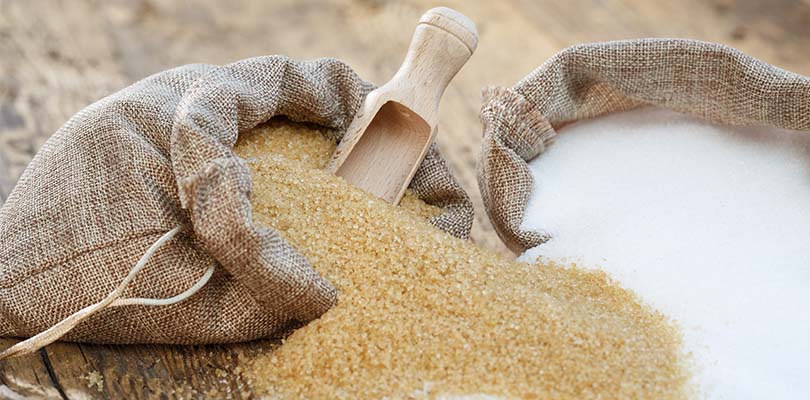Insulin Resistance vs. Diabetes
Having diabetes increases your risk of having a heart attack and stroke. It also can lead to additional health complications, such as vision problems. Before some people develop diabetes, they may have insulin resistance. This article looks at insulin resistance vs. diabetes so you can tell the two apart.
What is the Difference Between Insulin Resistance and Diabetes?
Insulin resistance and type 2 diabetes are different. Although it is not always the case, insulin resistance can occur before developing diabetes.
If you have type 2 diabetes, your body does not make enough insulin or does not use it efficiently to maintain proper blood sugar levels.
Insulin resistance differs from diabetes in that the body has an impaired response to insulin. This results in the panaceas making more insulin, but blood sugar levels may stay within the normal range at least until the pancreas cannot keep up with the increased insulin production.
What is Insulin Resistance?
Normally, the food you eat is broken down into sugar and enters your bloodstream. That triggers the pancreas to release insulin, which helps blood sugar enter the cells in the body, so it can be used for energy.
In people who have insulin resistance, their liver, fat and muscle cells do not respond to insulin normally. This causes the cells to inefficiently take up sugar from the blood. The result is a lot of blood sugar enters their bloodstream instead of the cells.
What happens next is the pancreas produces more insulin to get blood sugar into the cells. Over time, the cells stop responding to the increased insulin. This is called insulin resistance.
As time goes on, the pancreas cannot keep producing the needed insulin. This causes increased blood sugar levels in the body, and it may eventually lead to type 2 diabetes.
What Causes Insulin Resistance?
According to the American Diabetes Association, the exact cause of insulin resistance is not always clear, but there are certain things that can increase your risk of developing the condition.
Risk factors for developing insulin resistance include the following:
- Being overweight.
- Having a family history of type 2 diabetes.
- Being inactive.
- Smoking.
- Having high blood pressure.
What Are the Symptoms of Insulin Resistance?
Insulin resistance in itself does not typically cause symptoms. According to the Cleveland Clinic, if the pancreas is able to make enough insulin to keep blood sugar levels stable, you may not have symptoms.
But according to the Centers for Disease Control and Prevention, certain tests may indicate that you might be insulin resistant. For example, if you have high triglyceride levels, high LDL cholesterol and high blood sugar levels, you may have insulin resistance.
There also appears to be a link between insulin resistance and certain conditions. It is not clear if insulin resistance causes certain health issues or if the condition leads to insulin resistance. For example, there is an association between insulin resistance and polycystic ovary syndrome. This condition may cause irregular menstrual cycles and infertility.
Should diabetics be using raw sugar instead of regular sugar or sweeteners? Find out the difference between raw sugar vs. refined sugar here.
What Are the Signs of Insulin Resistance Turning Into Diabetes?
In some cases, people with insulin resistance develop type 2 diabetes. Prediabetes sometimes is associated with insulin resistance. According to the National Institute of Diabetes and Digestive and Kidney Diseases, over 84 million people in the U.S. have prediabetes.
If your blood sugar levels remain within a normal range, you may not have any signs that insulin resistance is turning into diabetes, but if you have high blood sugar levels, you may develop some of the following signs:
- Frequent urination.
- Increased thirst.
- Increased hunger.
- Fatigue.
- Unintended weight loss.
- Blurred vision.
- Numbness in the hands or feet.
How to Prevent Insulin Resistance
There are certain risk factors for insulin resistance — family history of diabetes and age — that are not controllable. However, there are several ways to reduce your risk, which also decreases your subsequent risk of developing type 2 diabetes.
According to the American Diabetes Association, the following steps may help prevent insulin resistance:
- Physical activity. Exercise helps you become more sensitive to insulin and helps your body respond efficiently. That’s why exercise is one of the components of a diabetes management program. Aim for 30 minutes of exercise on most days of the week. Find some type of exercise you enjoy so you will stick with it. Good options include walking, hiking, dance classes, circuit training and swimming.
- Maintain a healthy weight. Maintaining a healthy weight is an essential part of an overall wellness plan. Being overweight increases your chances of both insulin resistance and type 2 diabetes.
- Eat a healthy diet. A healthy diet helps prevent insulin resistance in a few ways. Eating foods such as complex carbs, lean protein and fresh veggies helps provide your body with the nutrients it needs to function well. Proper nutrition also helps your body use insulin efficiently. A healthy diet may also keep blood sugar levels steady and help you maintain a healthy weight.







